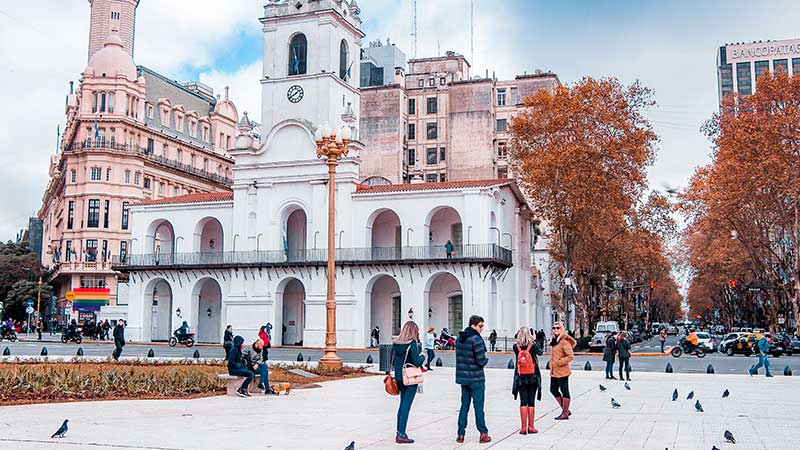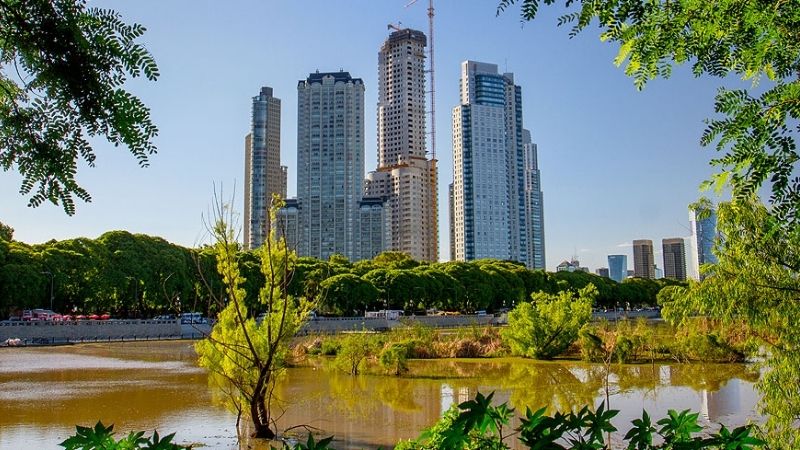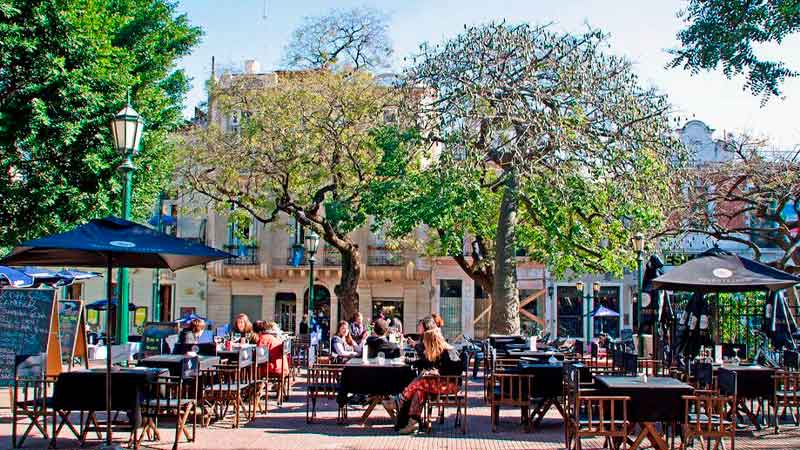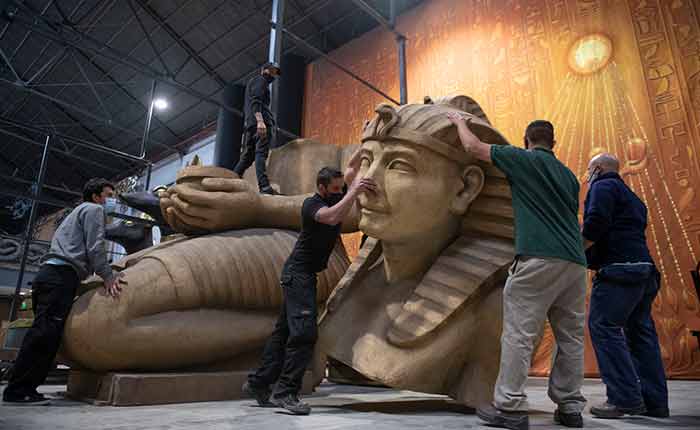The Cabildo de Buenos Aires occupies the same place since 1580, but its building underwent successive modifications. The first references to this emblematic construction come from the beginning of the 17th century. By 1608, it had adobe walls and a thatched roof. Inside, there was a meeting room and another that functioned as a jail. In 1610, two hundred years before the First Meeting, the roof was covered with tiles. Later, in the middle of the century, they made a balcony and towers out of wood and clay.
But, in 1725, it was in a very bad state and was demolished. Then, a new one began to be built, based on a project by the Italian architect Andrés Blanqui. Thus, the Cabildo as we know it began to take shape. The first floor was ready in 1748 and, in 1773, the tower appeared -a little higher than the current one- whose dome was covered with a tin roof. Yes, canned! That was the Cabildo of the patriots of 1810 and that was its time of greatest splendor.
Eleven years passed from the May Revolution before, in 1821, it was repealed as an institution and began to function as an administrative building.
In 1894, three arches from the north wing were removed to make way for Avenida de Mayo, and, in 1931, three more, from the south wing, were demolished for the layout of Avenida Julio A. Roca.
Since 1938, the Cabildo has housed the National Commission of Museums and Monuments and Historical Places, and the National Historical Museum of the Cabildo de Buenos Aires and the May Revolution.
Around 1940, the architect Mario Buschiazzo carried out the last major renovation of the building, which partly rescued the original design by Blanqui.
National Historical Museum of the Cabildo
The Museum occupies the building where the Cabildo of the City of Trinidad and Puerto de Santa María de los Buenos Aires, capital of the Viceroyalty of the Río de la Plata, functioned. In November 1939 it was opened to the public for the first time, but only the rooms on the upper floor were enabled. In 1960, an act of Congress legalized its creation and its national jurisdiction.
The Museum's heritage is made up of the building itself and the collections made up of documents, paintings and objects from the 17th to the 20th centuries. In the Room dedicated to the Cabildo as an institution, the activity that was carried out in the times of the Spanish colony is reflected and you can see, among other objects, the Royal Standard and the Ark of Treasuries, where the coins collected by the Cabildo were kept. through the collection of taxes. Also, the Regulation of Militias of 1801, a document that describes how the citizens had to form these armed bodies to enter into combat before the need to defend the city.
For the celebrations of the Bicentennial of the May Revolution, repair tasks were carried out and among the novelties modern interactive communication systems are incorporated that favor public participation. The Cabildo Museum has two touch screens, one with the image of the painting of the "Cabildo Abierto del 22 de Mayo" and another with the locations of the most important geographical points of the city of Buenos Aires in the year 1810 and its location in the 2010.



